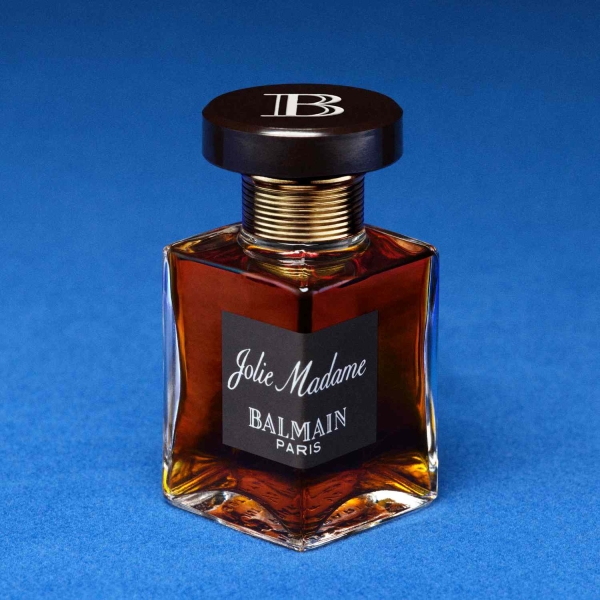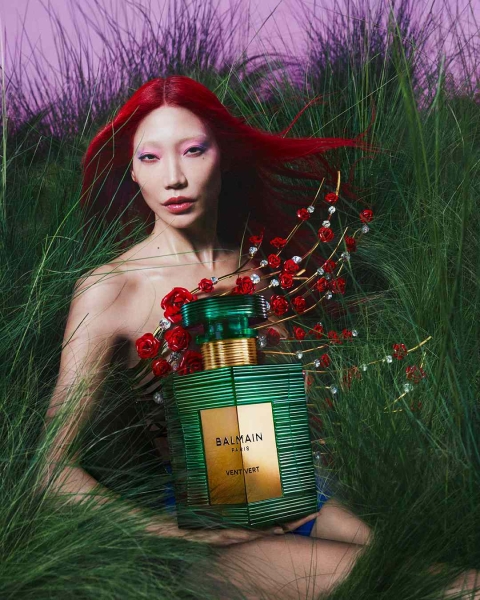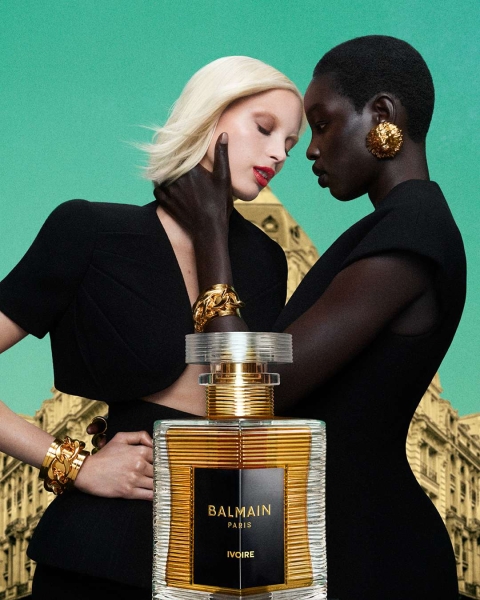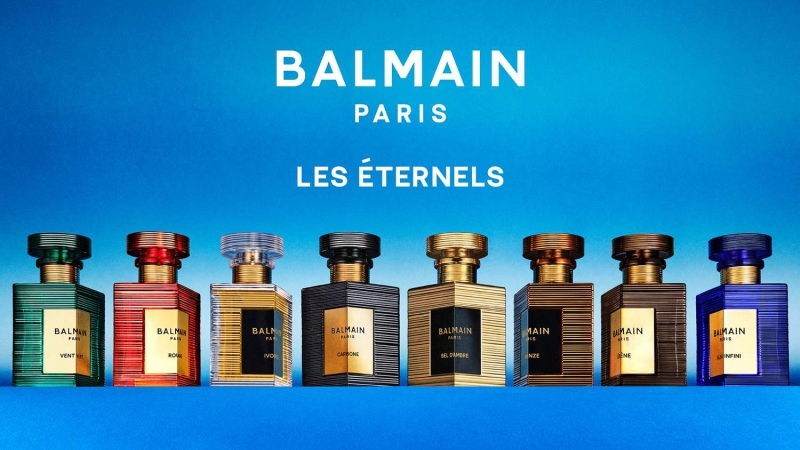Five years in the making, the eight genderless Les Éternels scents are not for the faint of heart.
Balmain creative director Olivier Rousteing knows you have to look back to look forward. For 13 years, Rousteing has been at the helm of the French fashion house, honoring Pierre Balmain’s legacy while reinvigorating the house for today. As the designer puts it, “Balmain’s DNA is a twist of the past and future together.” Now, with the launch of Balmain Beauty and the new Les Éternels de Balmain luxury fragrance collection, this cross-century synergy extends to the house’s olfactory world. Debuting with eight genderless “maximalist” scents, four of which are reinterpretations of landmark Balmain scents, the collection nods to the past while expanding the future.
“To me, a maximalist scent is three things,” Rousteing tells InStyle. “Unique because it’s about expression; Unforgettable because when you wear it, not only will people never forget you, but you will not forget who you are; and audacious because you have the audacity to be who you are.”
Rousteing first embarked on the creation of Balmain Beauty in 2020. The timing, which coincided with a severe burn accident that had a profound impact on him physically and mentally, was “destiny”; he is sure of it. “To create this concept right after going through that, questioning what is beauty in this world, was an emotional process,” he explains. “What I love about this fragrance is that it has become almost like a therapy for myself and a catharsis where I can express emotions. I believe you can not start a process of creativity without being humble.”
And trust that Rousteing, ever the student of life, delved into the art of fragrance and approached it with couture-like precision. Initially, he enrolled in Givaudan's Perfumery School in Paris and spent weeks learning about the craft and eventually mixing up his own fragrances in a lab. “If I wanted to create fragrances, I needed to understand the process of every single step,” he says. “So, that’s how we started.”

Building on Balmain’s beauty legacy also meant revisiting the archives, returning to the house’s first-ever fragrance, the prominent floral scent Elysées 64-83. It was unveiled in 1946, a year after Pierre Balmain introduced the New French Style, and he worked with Germaine Cellier, a trailblazing legend who was among the first women to become a major perfumer. “She was not only one of the first women, but she was playing with ingredients that, at the time, no one dared to play with,” he explains. “So, for me, [their collaboration] is pretty iconic in the revolution of Monsieur Pierre Balmain.”
In the following years, Pierre and Cellier also collaborated on Vert Vert, a wildly popular green fragrance, and continued to join forces until 1967. Other major fragrances in the Balmain portfolio were floral woody chypre Ivoire in 1979 and amber woody Ébène in 1983. The former even connects to one of Rousteing’s earliest and most vivid scent memories: his grandmother’s signature scent. “When I started Balmain 13 years ago, she said, ‘Oh my God, you’re going to Balmain? I wear Ivoire, you know!’ I didn’t know it when I was a kid, but that was her smell.”

Ultimately, Rousteing handpicked four of Balmain’s legacy scents–Vert Vert, Ébène, Carbone, and Ivoire– to be part of this new chapter. In Vert Vert 2.0, the floral green juice shifts from the original’s galbanum to a new vert de mandarine composition with jasmine, basil, spearmint, fig, and a woody blackcurrant base. Ébène, Pierre Balmain’s 1980s-era tribute to Africa, goes deeper and richer with its new deep ebony wood accord laced with tobacco, vanilla, and cinnamon. The next generation of Carbone hinges on the contrast between carnal musk and fresh rose, with zings of spicy cumin and leathery suede warming things up. As for Rousteing’s grandmother’s beloved Ivoire, the white floral bouquet of the original 1979 juice remains but has been injected with a special tubéreuse to play off of the vetiver.
Of the newcomers, there’s Sel D’Ambre, inspired by “glittering desert nights” with amber and salty ambergris. Then there’s Rouge, a tribute to Pierre Balmain and Rousteing’s shared love of Hollywood, a floral-fruity bouquet featuring lily, moraea ciliata, apricot-like osmanthus, deep georgywood, and ylang-ylang. Transporting its wearers (and admirers!) to the Mediterranean island of Elba where Pierre Balmain had a house is Bleu Infini, a woody aromatic scent combining cistus absolute and salty lichen. And then there’s Bronze, perhaps the most personal scent of all to Rousteing, as it was inspired by his healing journey after his burn accident. The woody chypre combines cedarwoods with spicy notes like black pepper and tobacco and adds a touch of herbaceousness with hay absolute.

Another way to honor Balmain’s beauty heritage was through the vivid metallic and jewel-toned bottles. The modern design pays tribute to the house’s first-ever bottle from 1946, with the same black-and-gold color palette, geometric shape, and label emblazoned across two facets. “The aesthetic of the bottle respects the strength of Balmain—the cut, the craft, the texture,” says Rousteing. “When you hold it, you feel such a sense of luxury.”
Living and breathing the Balmain house codes—sharp lines, striking color, and opulent details—Rousteing has seamlessly imbued them into an array of evocative scents. And trust that, like their predecessors, the Les Éternels fragrances will endure on all fronts. “I wanted to create iconic and timeless fragrances,” says Rousteing. “Not fragrances [that are trendy] for a year or two; ones that will be forever.”
